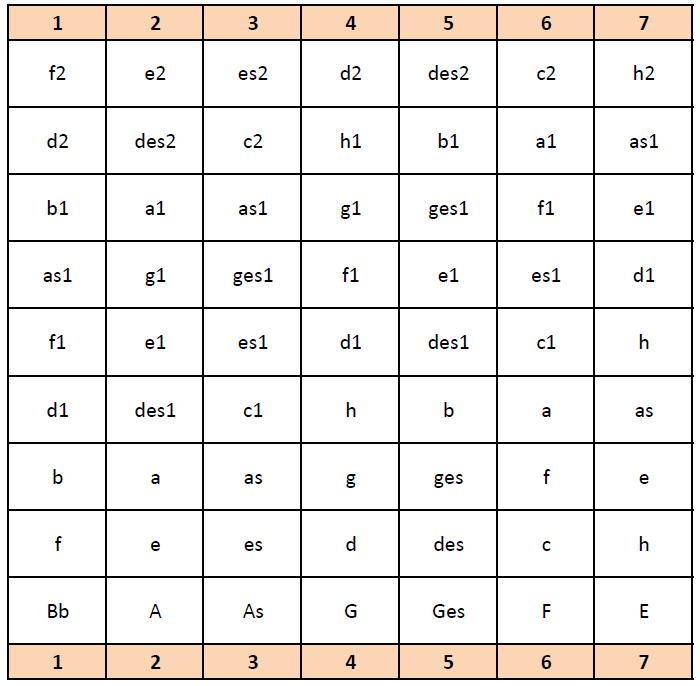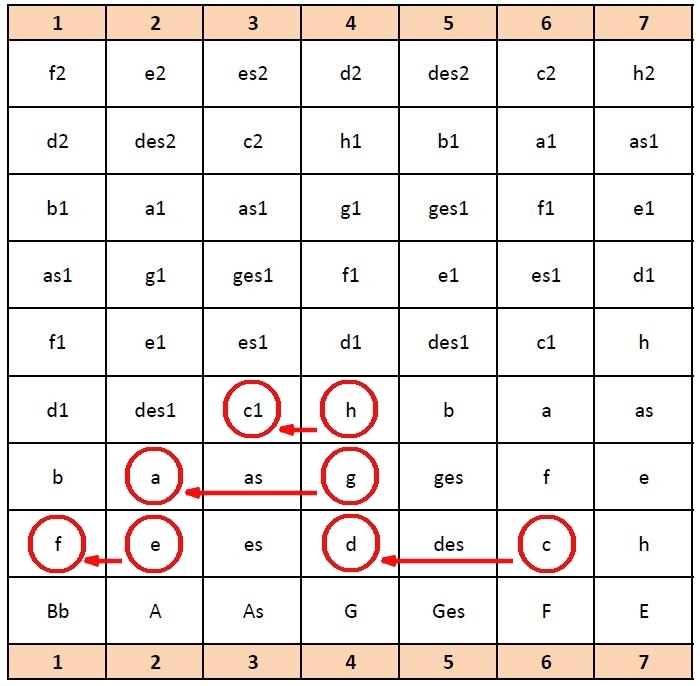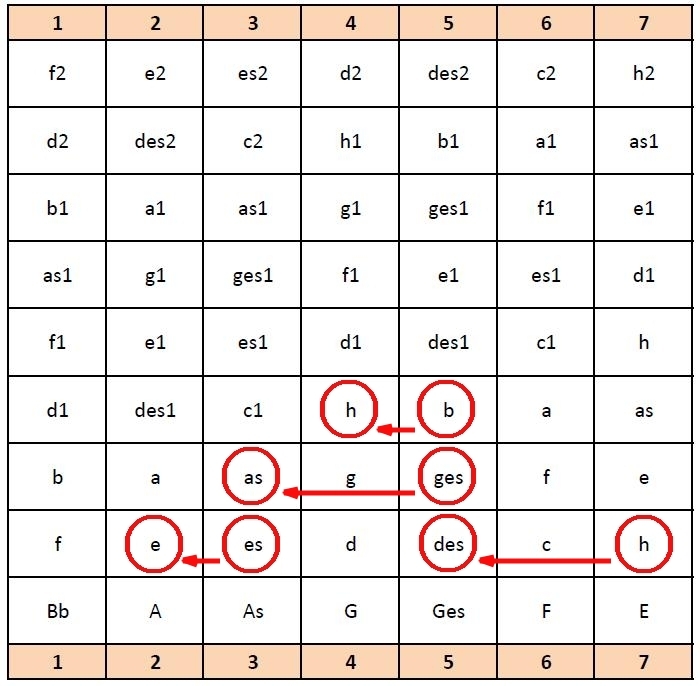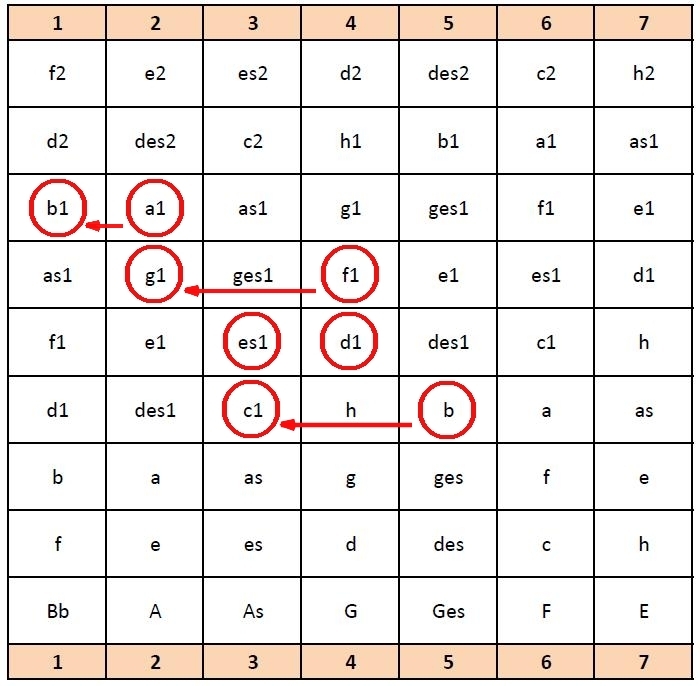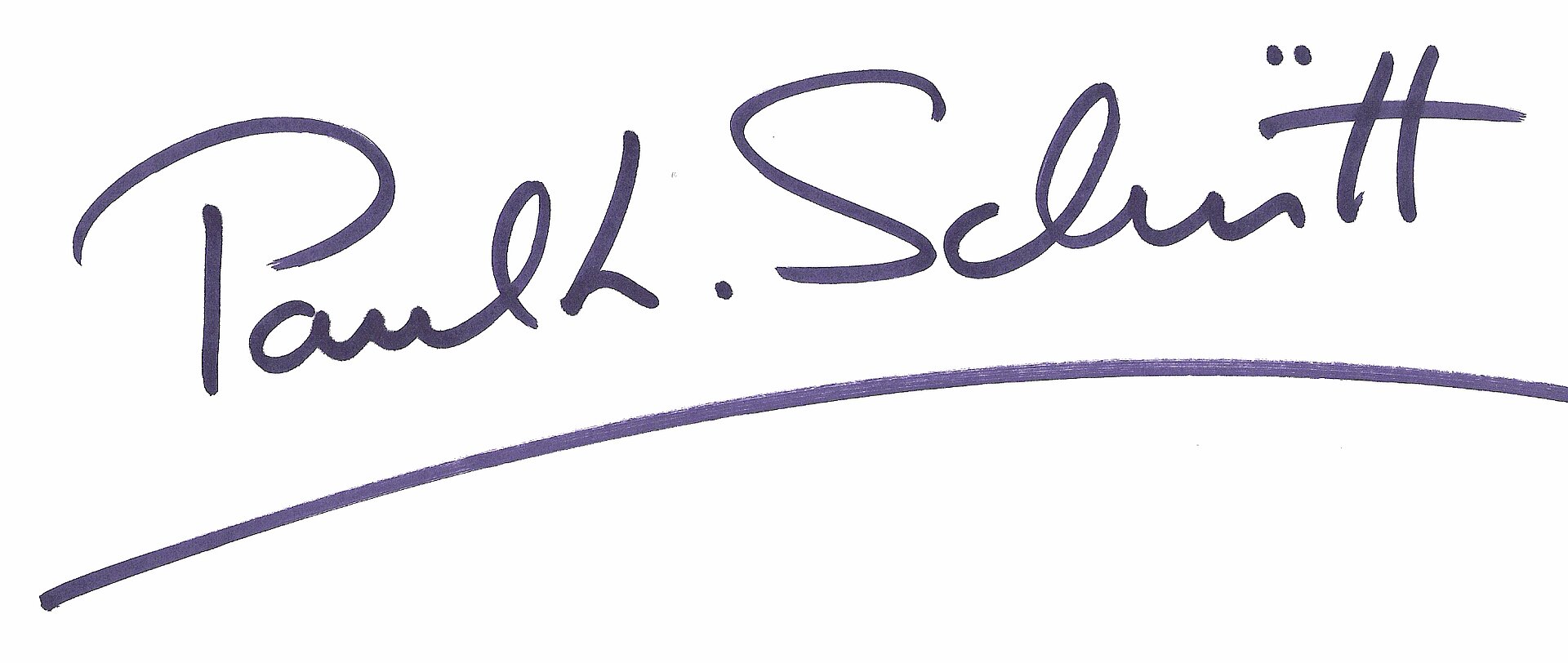Introduction
Often, airplanes arrive faster at their destination even though they leave their route and seem to fly zigzag. For the trombone, it's (hopefully) rather about well-going slides which we can let go quickly through a skillful tone sequence. Sometimes it can be useful to move to the tone f (small f) on the sixth position. In order to find out which tone is more suitable, you first have to know where the tones are actually located. On the trombone position chart, you can see the trombone positions from 1 - 7, with the notes that you can play on the different positions.
Motion sequences – musical scales from the first position
Musical scales that start on the first position, always have a motion to the front, no matter if they go up or down. Depending on this, the motion is either favorable or not. For the course of the melody, it is often favorable to keep an eye on the tone after next, in order to get an optimal movement pattern. For example for musical scales, the trombone position chart is helpful in transferring mechanical motion sequences into another tonality. Often it is easier to keep a combination of numbers in mind if you refer it to a certain symbolism (ATM machine/Smartphone etc.) The idea behind playing according to a trombone position chart is that musical scales which run upward, always make a movement upward and vice versa. The combination in major musical scales, when upwards, is always: whole tone, semitone, whole tone, semitone and downwards: semitone, whole tone, semitone, whole tone. The patterns change with the musical scales (for example minor scales) but then are the same for all the minor scales. You only have to make sure that the two tones can be played without detours, so without a countermovement. Like this, the positions that have to be played will arise automatically. For example for the notes f and g, when playing with the help of a trombone position chart, the note f is always played on the sixth position.
Exercise 1 – C major/B major
Try to keep in mind the symbolism of C major while practicing. Then transmit the symbolism to the initial tone b and start playing. (B major is a sharp key with five #; for convenience only, I only use a trombone position chart with b signs) In both scales, which can always be moved by a semitone, the same symbolism is used.
Exercise 2 – Bb major
Finally, I still want to discuss the scale Bb major, which can of course be moved with the trombone position chart as well. As you can see, the symbolism remains here as well and opens up new possibilities to expand the current sliding technique. And now have fun with your very own trombone position chart.

